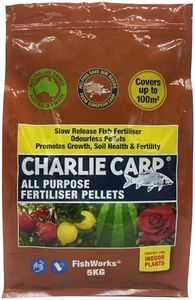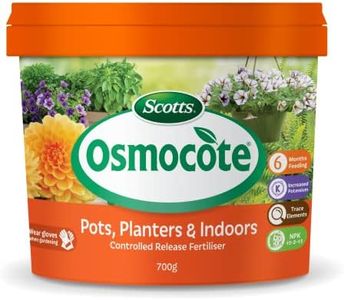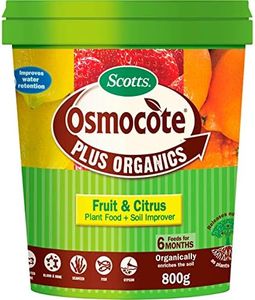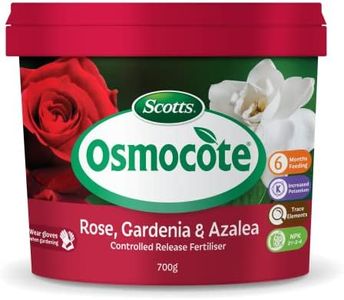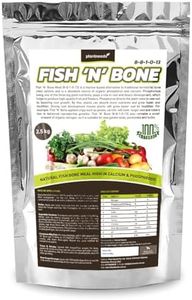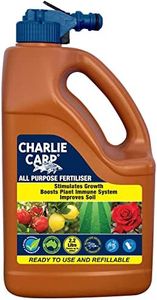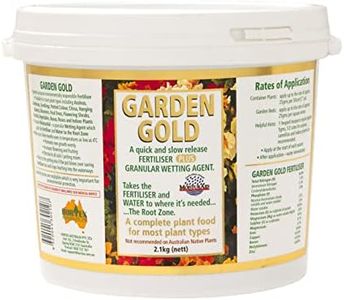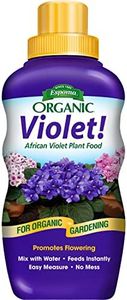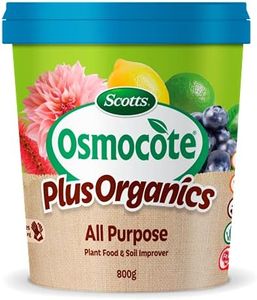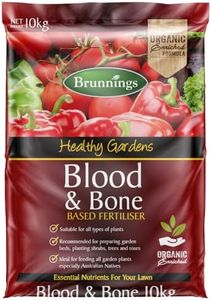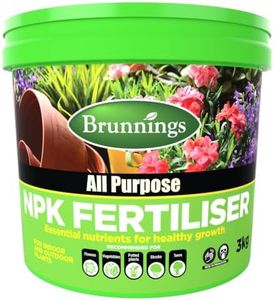We Use CookiesWe use cookies to enhance the security, performance,
functionality and for analytical and promotional activities. By continuing to browse this site you
are agreeing to our privacy policy
10 Best Potted Plant Fertilizer
From leading brands and best sellers available on the web.Buying Guide for the Best Potted Plant Fertilizer
Choosing the right potted plant fertilizer can make a big difference in how lush and healthy your houseplants look. Different plants have different needs, and fertilizers are designed to supplement what potting soils often lack over time. To pick the best one, think about what your specific plants need, how often you want to fertilize, and how much convenience matters to you. Understanding the details on labels will help you make an informed choice and avoid over or underfeeding your plants.NPK RatioThe NPK ratio on a fertilizer package stands for Nitrogen (N), Phosphorus (P), and Potassium (K), which are the three main nutrients plants need. Nitrogen helps leaves grow, phosphorus encourages strong roots and blooms, and potassium boosts overall health and resistance. The numbers show the percentage of each nutrient, like 10-10-10 or 3-1-2. High-nitrogen options (like 20-10-10) are good for leafy green plants, while balanced or higher-phosphorus mixes (such as 10-20-10) help flowering or fruiting plants. Decide what your plants need most—if you’re uncertain, choose a balanced option. Too much of any nutrient can hurt plants, so always follow directions.
Fertilizer Form (Liquid, Granular, Slow-Release, Spikes)Fertilizer comes in liquid, granular, slow-release pellets, or spikes. Liquid fertilizers work quickly and are ideal for regular fine-tuning, but need more frequent application. Granular types are sprinkled on the soil and watered in, making them simple but sometimes slower to act. Slow-release pellets or spikes gradually feed your plant over weeks or months with little effort on your part. If you prefer more control and want to customize feeding, go with liquids. For convenience and less frequent maintenance, use slow-release or spikes. Think about your care routine and pick the form that matches your lifestyle.
Organic vs. SyntheticFertilizers can be organic (made from natural plant or animal materials) or synthetic (chemical-based). Organic options release nutrients more slowly and can improve soil health over time, but may have a mild smell. Synthetic fertilizers provide nutrients fast and are easy to measure for a quick boost. If you want all-natural care and gradual feeding, choose organic. For quick results or precise dosing, go with synthetic. Consider what’s important to you—natural ingredients or fast, measurable results.
MicronutrientsBesides the big three (NPK), plants also need small amounts of other nutrients, called micronutrients—things like iron, magnesium, and calcium. Some fertilizers include these extras, which are especially helpful if your plants look pale, have yellowing leaves, or grow poorly despite getting main nutrients. If your potting mix is very basic or you’re growing demanding or exotic houseplants, look for products listing micronutrients. For most general houseplants, this is less critical, but it’s a bonus for overall plant health.
Application FrequencyEach fertilizer type has a recommended application schedule: weekly, monthly, or every few months for slow-release formulas. Some plants benefit from frequent light feeding, while others need less. If you like to check your plants often, liquid fertilizers with frequent use might suit you. If you want low-maintenance care, pick slow-release options. Always check recommended schedules and stick to them to avoid over-fertilizing.

